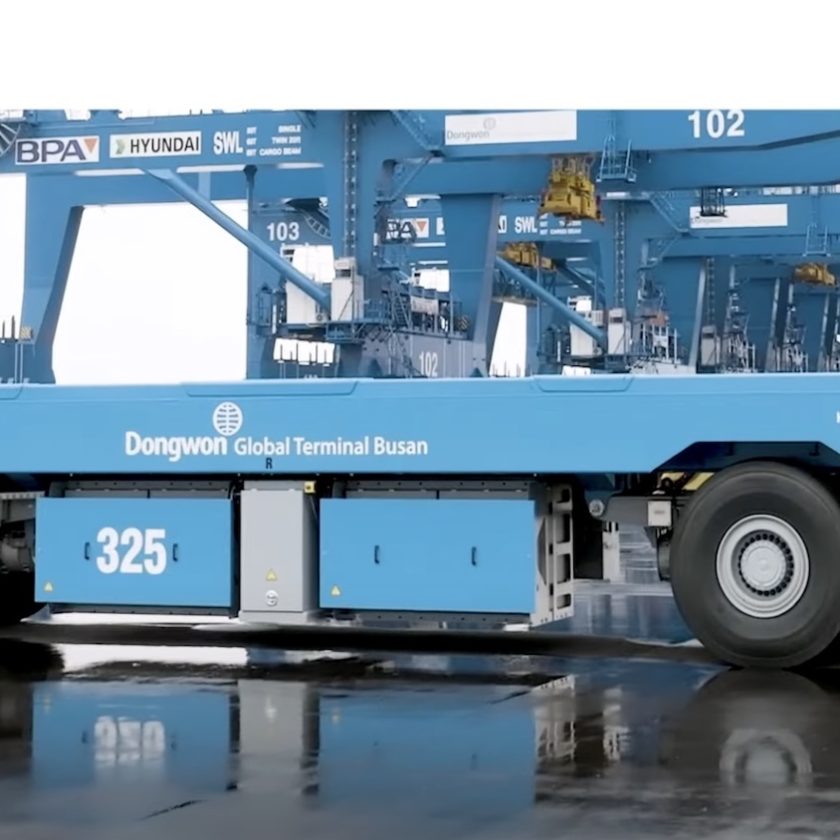Automation system receives EN ISO 13849 certification
NewsLASE has received an important safety certification for an automation system that allows an automated yard crane to transfer a container to a road truck with the driver in the cab.
Busan’s newest automated terminal features AGVs produced in a partnership between VDL and Hyundai Rotem.

Dongwon Global Terminal (DGT) at Busan Newport held its official inauguration ceremony earlier this month. The terminal is the first in South Korea to implement AGVs for horizontal transportation, which marks an important step in Korea’s journey with port automation.
DGT is the seventh container terminal at Busan Newport. All of the six other terminals at Busan New Port have automated yard cranes, or ‘transfer cranes’ as they are referred to in South Korea, but DGT is the first to implement AGVs.
As previously reported, the development of DGT was funded by the Busan Port Authority (BPA). As part of a wider ambition to revive Korea’s domestic crane industry it was decided to purchase all the cranes from Korean suppliers.
The terminal opened with 9 double trolley STS cranes, which were supplied by Hyundai Samho Heavy Industries. The yard currently features 23 yard blocks served by 46 ASCs. The first 12 ASCs were ordered from Doosan in 2020, while others were manufactured by HJ Shipbuilding and Construction (HJSC), which includes the former Hanjin Heavy Industries & Construction Co. Ltd., a company that has built many container cranes in the past under the Hanjin brand.
While Hyundai has previously developed and marketed AGVs, it has never sold any to the handful of terminals around the globe using AGVs today. For DGT Hyundai Rotem, which is part of the Hyundai Motor Group and manufactures rolling stock, defence products and plant equipment, partnered with VDL of the Netherlands to deliver the AGVs.
The AGVs at DGT are zero emissions machines with a battery drive, which VDL can accommodate with its modular design that allows different power options to be used with the same platform.
As part of the testing and commissioning process the AGV were run in a trial operation using a digital twin software environment created by AKQUINET and Piscesoft combined with the machines themselves. Although the TOS (Supplied by Korea’s CyberLogitec) was not yet running, Piscesoft and AKQUINET jointly developed “hybrid test scenarios” using AKQUINET’s CHESSCON simulation software.
“We supplied the real AGVs with all the necessary data from the future TOS and were therefore able to run the horizontal traffic at the terminal under real conditions before commissioning, even though no ship had yet been unloaded,” said Prof Dr Holger Schütt, Managing Director of AKQUINET’s Port division.
AGVs have been a long time coming in South Korea. Fully automated terminals have been studied by ports and government authorities many times, and at one point it looked like they would be implemented first at Gwangyang. However, the most recent timeline has pushed full automation at Gwangyang back to somewhere between 2026-29. In 2021 the Incheon Port Authority announced it intended to develop Stage 1-2 of its Incheon New Port development as a fully automated terminal, including AGVs, which is planned to open in 2026.
By subscribing you will have: